
Non-Cossack Infantry in the Don Host
Not all the men raised in the Don were Cossacks. Many were inogorodniye, either being local non-Cossacks or men from outside the district.
These are ideal units if you want some low morale troops in your Cossack army without having to lower the Cossacks themselves.
3rd Don Rifle Regiment
 |
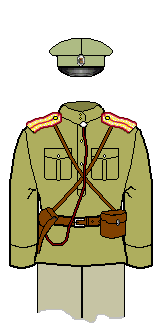 |
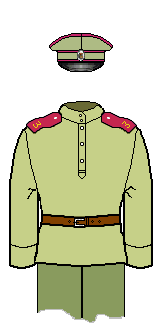 |
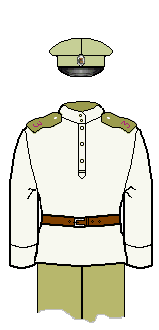 |
| Officer: parade dress | Officer: field dress | Trooper: parade dress | Trooper: field dress |
The colour of rifle regiments traditionally was raspberry, which was a pinky dark red. Sources translate this in various ways, generally as crimson. Period items are in a variety of shades from pink to red.
It would have been hard to find the official colour during the Civil War, and it seems red was used instead.
Although we know officers were prone to wearing parade and pre-WWI items during the Civil War, it would seem likely that any officers for this unit were non-Cossacks drafted in from the Volunteer Army or during the various campaigns. They would therefore not have had the official uniform, and probably just wore what they had.
Uniform Details
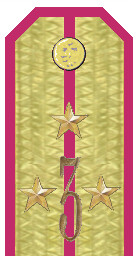 |
 |
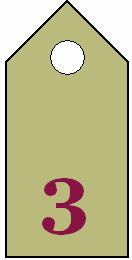 |
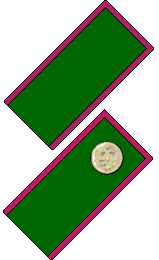 |
| Shoulderboards: Poruchik (Lieutenant) | Shoulderboards: Private coloured side | Shoulderboards: Private field side | Greatcoat collar tabs |
Dress shoulderboards were raspberry marked in yellow. Buttons and officer lace were gold. Officer's monogram in and rank markings were in gold.
Markings on the khaki shoulderboards were raspberry.
The cipher was probably just a simple number, the colour removing any potential duplication. Since they were Don Rifle units, there is the possibility that a Д for Don was added.
We would guess any papakha were khaki or civilian. The correct pre-war version for rifle units was dark green with a crimson cross in a circle for all ranks.
History in the RCW
The regiment was placed in the 2nd Don Infantry Brigade, which in October 1919 consisted of:
Life-Guard Finlandski Regiment – 828 bayonets, 45 MGs
3rd Don Rifle Regiment – 825 bayonets, 46 MGs
Don Training Regiment – 530 bayonets, 130 sabres, 18 MGs
Engineer Company – 132 men
17th Don Battery – 4 guns
English Trench Battery – 7 guns
1st Don Heavy Battery – 2 guns
2nd Don Rifle Artillery Divizion– 8 guns
The unit did not survive the retreat in late 1919.
Flags
The official HQ field flag was an orange diamond inside a raspberry field with the cipher in black. It may have looked something like this:
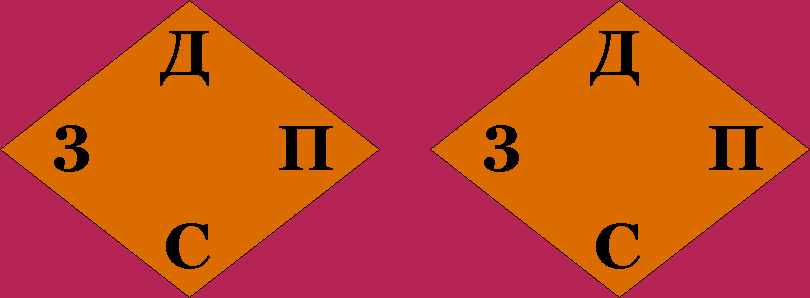
Other Similar Units
While there was a fairly substantial 3rd Don Rifle Regiment, oddly Volkov lists no 1st or 2nd Rifle Regiments. It would seem likely that there had been such units and that they were in the missing 1st Don Rifle Brigade. Presumably something catastrophic happened to them during one of the many collapses in the Don front lines, and they were never reformed. They presumably wore the same uniform.
Budënniy claims to have basically wiped out an "officer" brigade of three regiments near Kazanskaya (northern Rostov Oblast) in September 1919. That places them in the Don Army. They are described as staying when the mounted Cossacks fled and fighting particularly hard to retain their black banners with double-headed eagles.
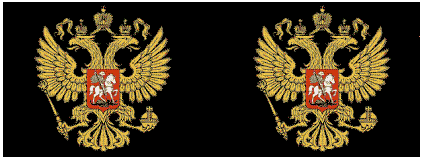
Other Cossack Hosts also had "Rifle Regiments" which we suspect were non-Cossack. Almost every division of Kuban Cossacks in October 1919 is listed with one, and the 1st Terek Cossack Division is as well.
Other non-Cossack Units of the Don Host
If we assume that all the Plastoon and Partisan units of the Don Host are Cossack, or at least were treated as if they were Cossack in terms of dress, that still leaves quite a few units that are almost certainly non-Cossack.
There is a 2nd Don Separate Volunteer Brigade listed in October 1919, consisting of :
1st Foot Regiment – 734 bayonets, 10 MGs
2nd Foot Regiment – 760 bayonets, 57 sabres, 13 MGs
Composite Horse Divizion – 262 sabres, 2 MGs
Composite Battery – 4 guns
Engineer Company – 59 men
Judging by the names and the lack of cavalry, I would guess this was former Reds impressed into service.
Volkov notes that the 3rd Don Separate Volunteer Brigade was seconded from the Volunteer Army in April 1919. Neither Boguchar nor Voronezh are inside the old Tsarist Don region, but they were claimed by the Host during the Civil War. Its strength at October 1919 was:
Boguchar Separate Battalion – 309 bayonets, 65 sabres, 39 MGs
Stavropol' Separate Battalion – 179 bayonets, 43 sabres, 9 MGs
Voronezh Separate Battalion – 163 bayonets, 9 MGs
Composite Horse Divizion – 90 sabres, 3 MGs
Boguchar Artillery Divizion – 8 guns
Presumably at some stage there had been a 1st Don Separate Volunteer Brigade. Perhaps that was what Budënniy fought.
In October 1919 the Don Host also listed the Tula Foot Brigade:
1st Tul'skaya Foot Regiment – 650 bayonets, 8 MGs
2nd Tul'skaya Foot Regiment – 448 bayonets, 8 MGs
3rd Tul'skaya Foot Regiment – 623 bayonets, 3 MGs
Engineer Company – 58 men
Artillery Divizion – 5 guns
This unit was formed from the Red Army's 4th Special Brigade, which was captured by Mamontov in Tambov during his raid in August 1919. It was initially given the name of the Tula Volunteer Infantry Division and had upwards of 3,000 men. There may also have been a cavalry divizion and a 4th Kozlovskiy Regiment for a while. The division evaporated fairly quickly, as such units had a tendency to do. The remaining men, probably mostly officers, were placed in the St George Gundorovskiy Regiment in early 1920.
Some sources cite that the first regiment of this unit had a plain white flag with a large 1ТДП (for 1st Tula Volunteer Regiment) in black. There is a reference to the other Regiments having 2ТДП and 3ТДП, and that the men wore green ribbons on their caps, (as opposed to standard white cockades/ribbons).
All these units would have looked very similar to the Rifles in the field uniform, only the difference in shade of red really, being a scarlet rather than a crimson.
Photos
We have no photos we can identify as Don Rifles or Foot in the Civil War. This is hardly surprising since they were not highly regarded.